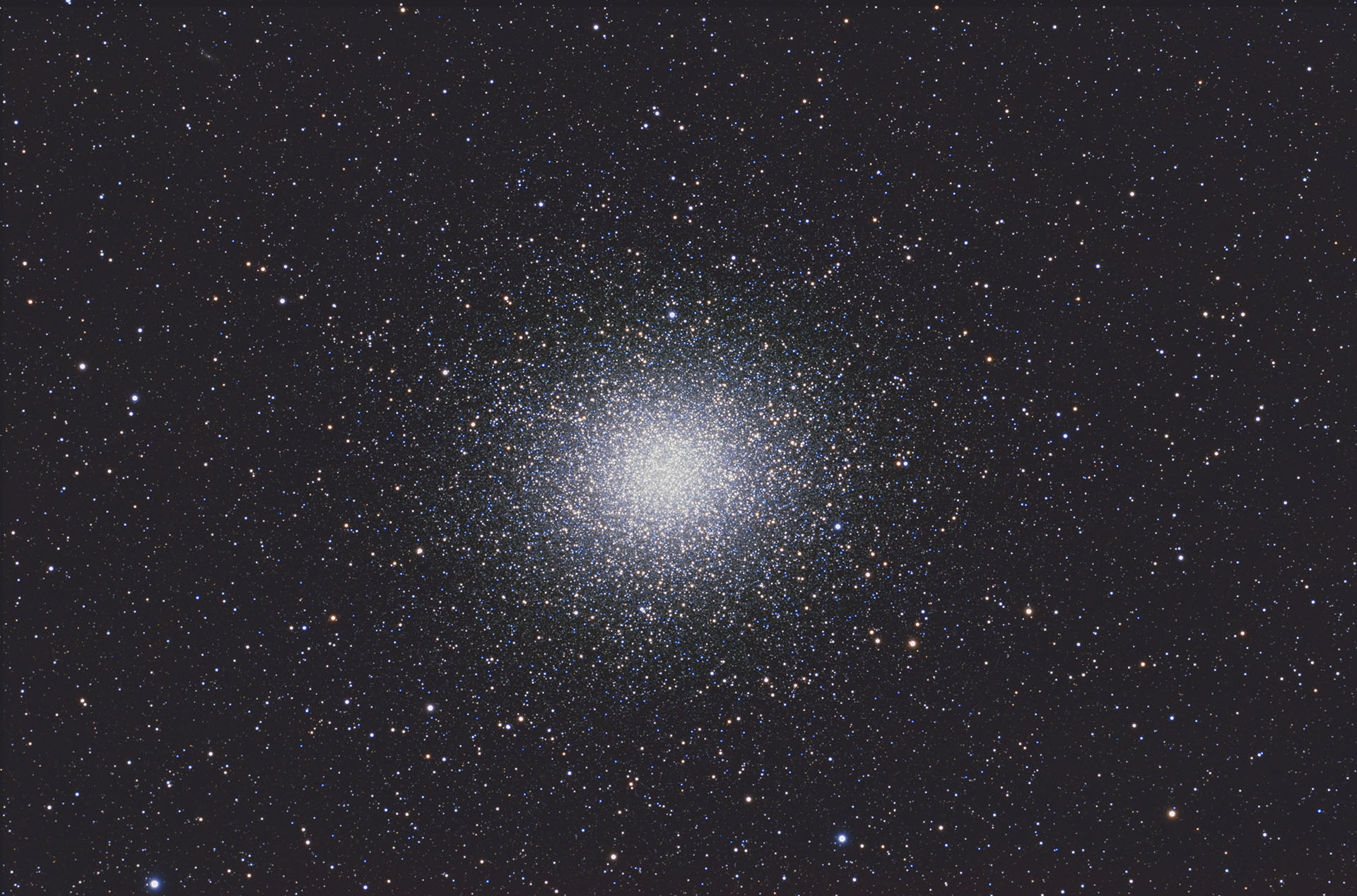
QHY183C Omega Centaurus imaging session

The above image of NGC5139 (Omega Centaurus) was taken using a
AP130GTX refractor with QUAD compressor
Perfect sensor spacing was acheived using off the shelf accessories: an AP EOS adapter and QHY EOS lens accessory.
The QHY183C cooled CMOS camera was guided with a "bolt on" SBIG STi guider kit.
The kit consists of a set of mounting rings, universal base plate, c-mount adapter, 100mm lens and lens shade
Despite its short focal length it accurately guided the AP refractor with zero differenital flexure.
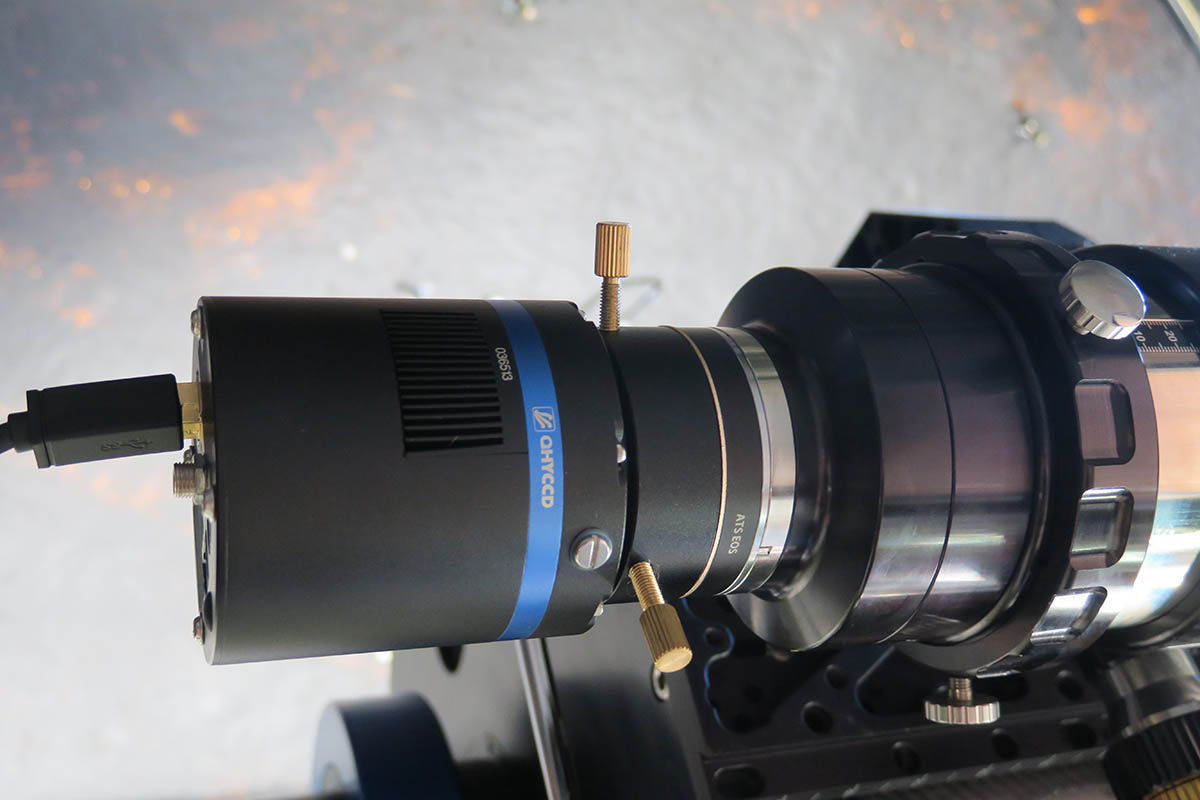 |
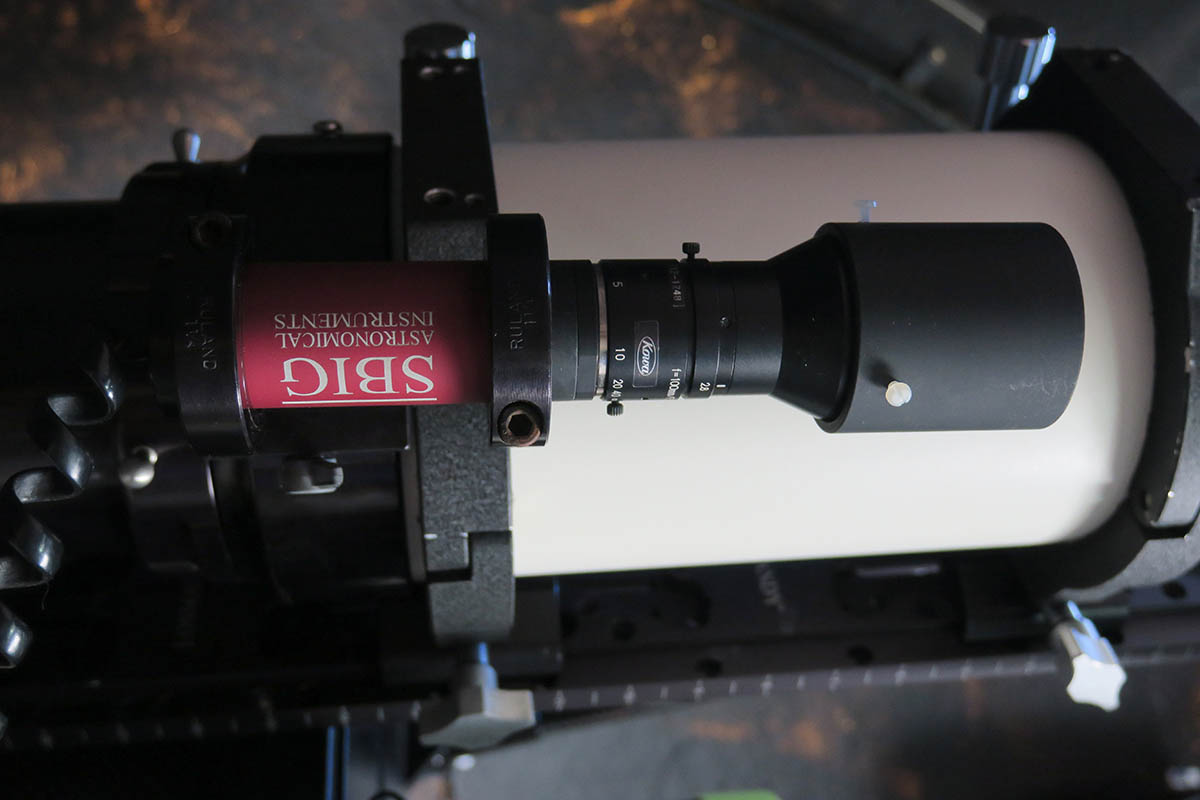 |
3x 2 minute dark frames (-25 C) were also taken and median combined
(note the dark frame fixed pattern structure and amplifier glow below) and used for subsequent image calibration
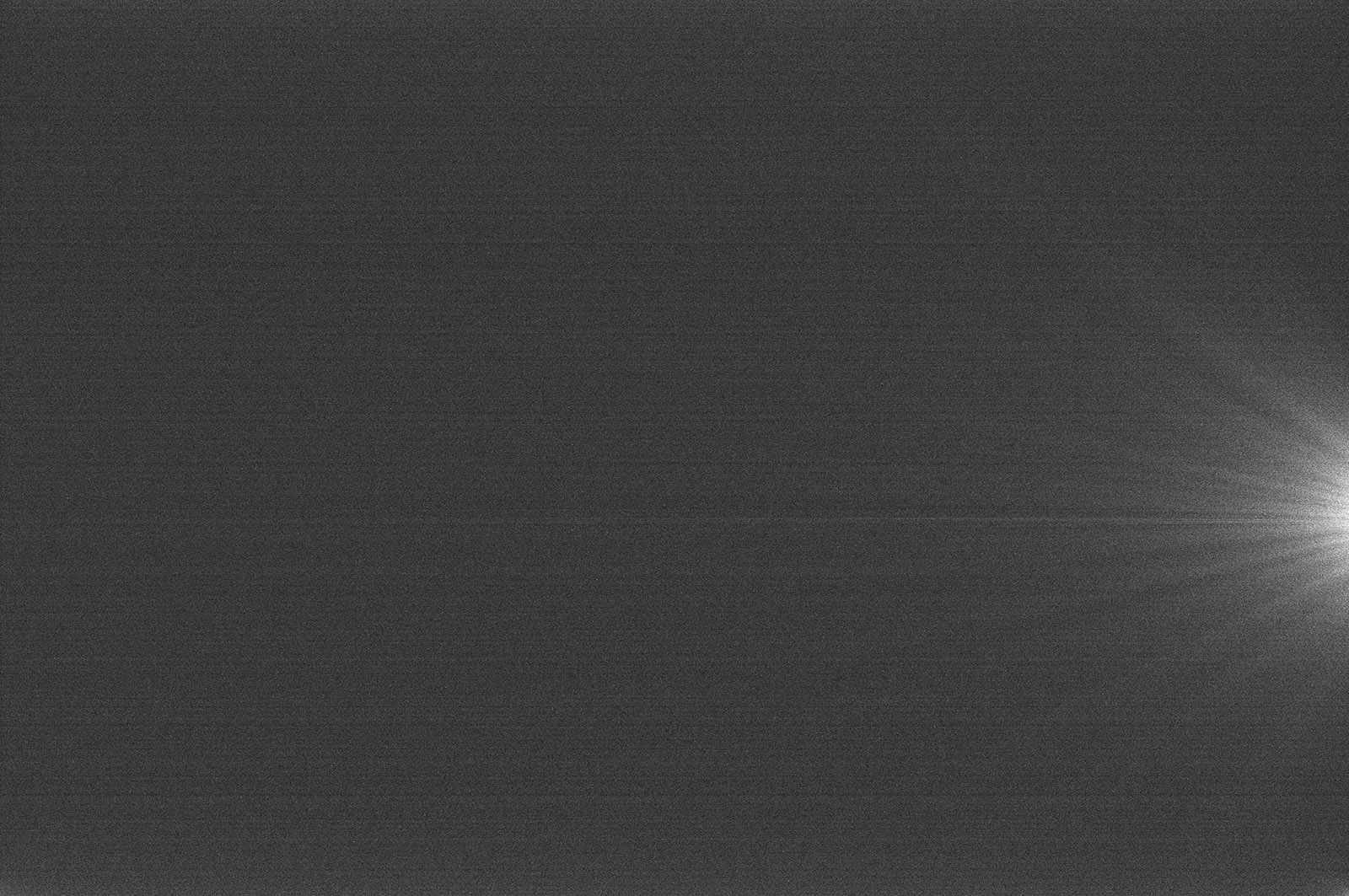
For comparison purposes, the dark frame below was taken using a SBIG STXL16200 CCD (note zero pattern noise or amp glow)
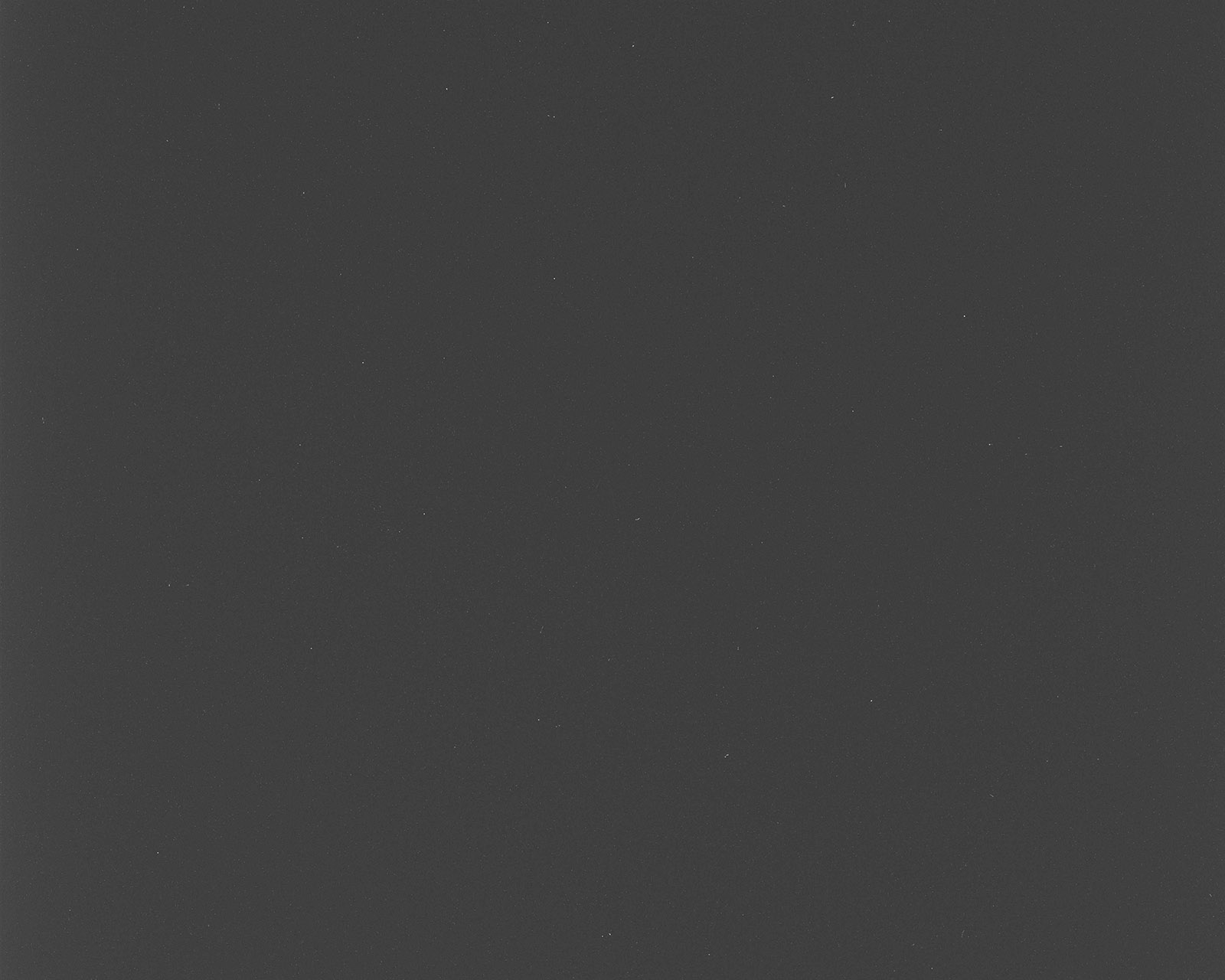
Despite the CMOS amplifier glow, the camera dark-calibrated well. Image downloads are remarklably fast (2-3 seconds) hence allowed dozens of subframes to be captured with
very little time penalty. Images files are approximately 40Mb in size and were spooled to a NAS drive
for later calibration and processing. As the camera lacks a mechanical shutter, 5x median darks were captured
with the telescope lens cap re-attached at the end of the imaging session.
This is the "third light" image from the camera, plus a few notes lower down on the page. The QHY183c is built around SONY's IMX183c sensor here are the specs:
Mega Pixels – 20.5 mp
Cooled Delta T – 40°C Below Ambient
Pixel Array – 5544 x 3694
Read Noise – 2.7e
Sensor Diagonal – 16mm
Sensor Type – CMOS
Sensor – SonyIMX183
Weight – 500 g
Pixel Size – 2.4 microns
Peak QE – 74%
Max Frame Rate – 25fps
Full Well – 16ke
Full Res Frame Rate – 15fpsFor the most part the camera works well out of the box. I found the thermal control would randomly ignore the set temperature, the cause remains a mystery, but turning off the cooler in software then on again seems to be a fix.
I've had a QHY 183C camera for some months now, but for the most part it has been gathering dust until now. I found the high resolution and QE seductive, had not done much one-shot-colour imaging, but thought "how hard can it be?". Mistake number one.
First up the QHY software is a disgrace. The drivers are solid enough, but the bundled package is barely useful. The hardware also becomes very unstable with more than a 2 metre USB3.0 cable. I've tried longer cables on powered USB3.0 hubs, but the results were hit and miss.
MaxImCCD was happy and very stable with the supplied ASCOM drivers, hence I ran with that to control the imaging sequence and autoguiding.
A combination of tiny pixels, shallow well depths and 12bit output put me in a world very different to CCD's with acreage, massive wells and 16 bit data. That said, the initial results while frustrating, were also promising. The rule for colour CMOS seems to be short exposures and lots of them!
De-bayering a raw image gives a highly green cast result. It also takes a little digging on the web to discover what matrix is used for the SONY183c (answer: RGGB). Most image processing software can easily remove this, but Pixinsight delivers accurate results that can be easily batch processed.
The 2.4 micron pixels also give excellent symmetry to the de-bayered result, with no asymmetric rainbow fringing around otherwise well formed stars. Being a small and light camera head, there is little mass to tax/flex less than robust telescope focusers. The high frame rate of the camera makes focus itself a breeze. While you could muck about with an automated unit, setting the refresh rate to 5 frames per second and say 400% image magnification, real-time accurate focus is a trivial task. AND you can use this puppy as an Uber planetary camera to boot.The lack of a mechanical shutter can make it difficult to capture dark frames. There is no lens cap for my RC16 inch truss telescope, but the process of placing a lens cap on something a little smaller is usually easy enough. That said, given its size, cost, sensitivity and resolution, the QHY183c is quite a remarkable package, and well worth a look for those interested in colour images
The work flow was as follows.
The following requires future attention/correction.
|

Can you see all 26 grey scales above?